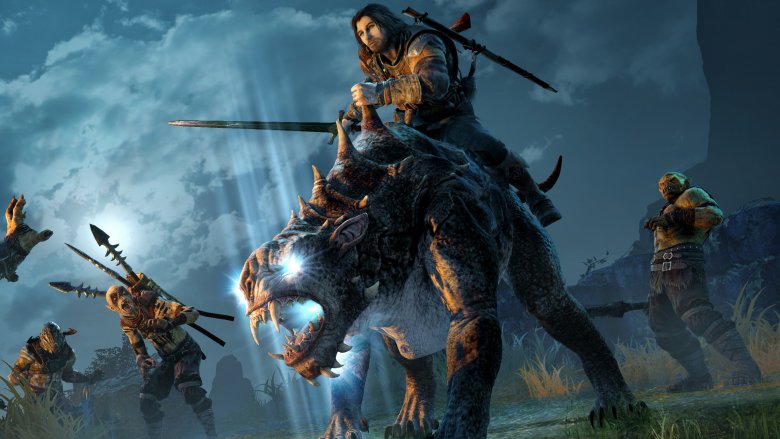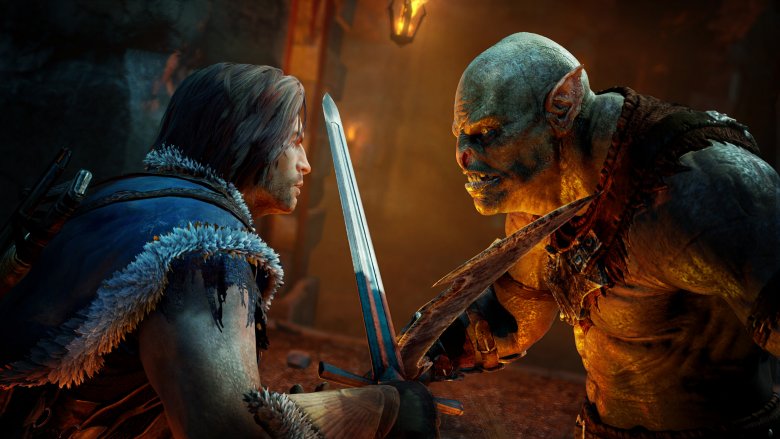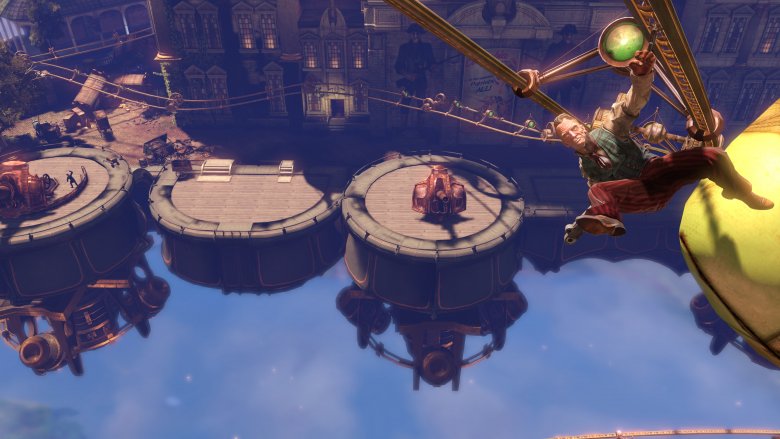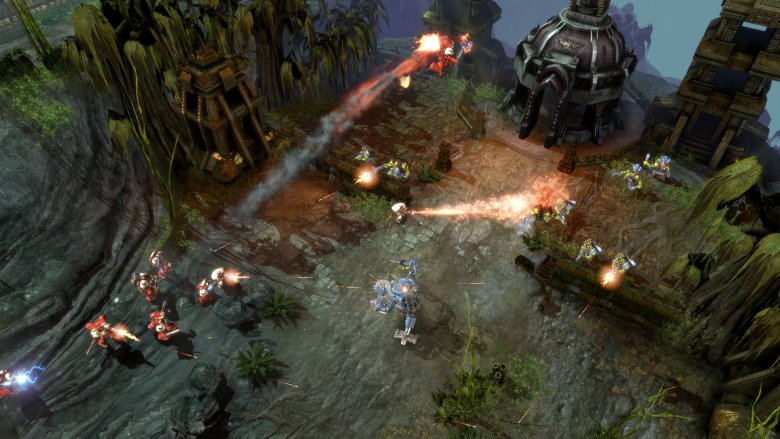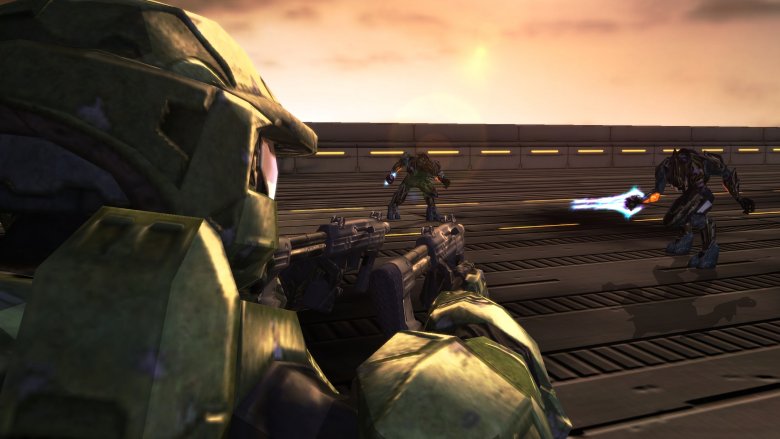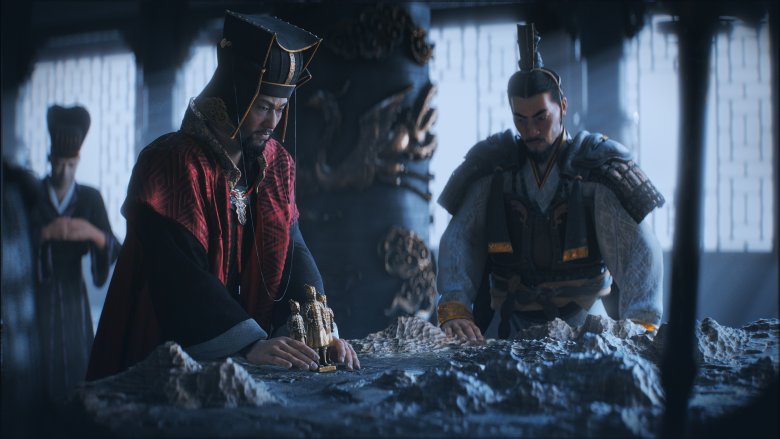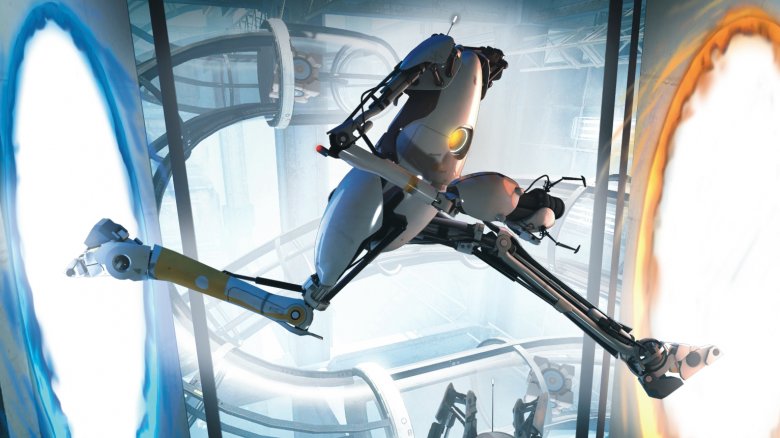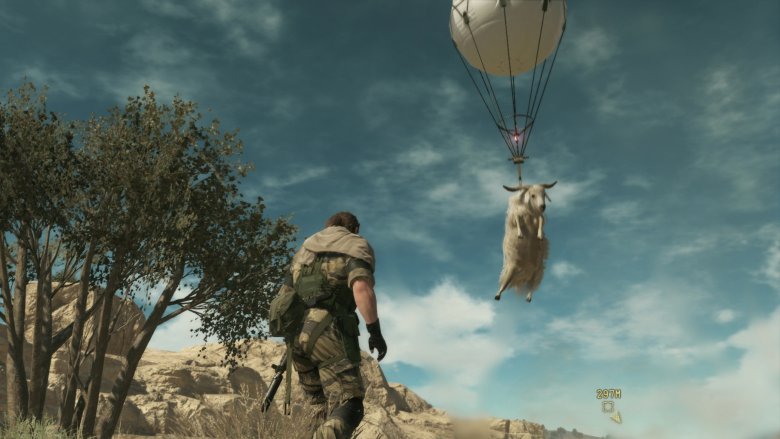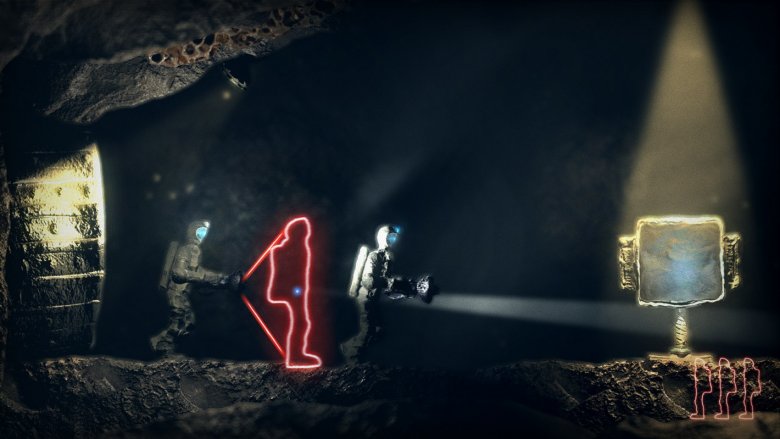Games With Great Features Nobody Else Copied
The games industry is an enormous laboratory, constantly experimenting and discovering new directions. Even when buried in sequel-itis and blockbuster clones, there's always some studio ready to gamble on some crazy new idea. Sometimes, that studio involves hundreds of people across multiple continents; other times, it's a couple of guys in a basement. But at the speed of internet discussions, bold new ideas can be found, shared, and loved by millions of players, and in turn, other studios will copy and evolve the idea in their own right. Entire genres can be created this way. MOBAS, anyone?
But every once in a while, even a great idea goes nowhere. The game itself might be a breakout success, or even a defining classic. But for some reason, one or more of its best ideas never transmitted to any future game. Maybe the idea was just too specific to that particular title; maybe the technology behind it was too hard for another studio to bother copying. What we're left with are a series of brilliant features that lived and died in only one game or franchise — features that continue to inspire discussions years later, and still have yet to appear again. Here are some games with great features that nobody else copied.
Shadow of Mordor's Nemesis system
Franchise tie-in games generally don't stand out from the crowd. Many times, they're just derivative games with low budgets meant to cash in on the good name of the larger intellectual property. But every once in a while, one comes along that dares to do something bold and fresh, while wearing the clothes of a popular series. Middle Earth: Shadow of Mordor, on its surface, just appears to be another open-world game with fighting mechanics borrowed from the Batman: Arkham series. But then you meet the Orcs, and all of a sudden you're living in the future of game design.
Set in J.R.R. Tolkien's fantasy universe, the game of course lets you swing your sword and turn enemies into so much sushi. But here's the thing: sometimes, those Orcs survive the encounter. And they remember you. They remember if you ended up running away from the fight; they remember if you set them on fire. They end up forming stories of their own, based on their relationship with you. Over time, they may grow into great chieftains in their own right, gaining new powers and abilities, just like you. And they'll come back for you one day.
This AI system, called Nemesis, blew away critics when the game released, and players were equally wowed. Nemesis was hailed as the first truly next-gen innovation of the modern era, and many assumed it was only a matter of time before the copycat games arrived. Only... they never did. The only game to expand on Nemesis has been the game's own sequel, Shadow of War.
Fighting on rails in BioShock Infinite
First-person shooters have been around since the early 1990s, so they're pretty well-explored territory at this point. The basic idea around combat encounters hasn't changed much: walk into a room, find cover, blast away at enemies, and maybe go up a floor or two for some verticality. Great campaigns might vary this up a bit, or introduce some unique alterations throughout the experience, but the basic structure remains intact.
Enter BioShock Infinite. The BioShock series has always loved to push the genre's boundaries in new directions, but nothing ever shook up the standard combat encounter design like the rails system in Infinite. Suddenly, a single encounter didn't have to be designed for one contained space: it could take place in multiple locations at once. The rails also allowed for a level of verticality that other shooters just couldn't achieve, as hero Booker DeWitt arced over his foes and rained bullets from above. And hey, look: the enemies could take the rails too, making for a different kind of shoot-out than other games had. One mechanic, many advantages, and a complete shift in design theory.
In response, other shooter series... did nothing. Partly, this may have to do with the fact that shooter campaigns have gotten shorter and shorter over the years (and, more importantly, received less and less of the development budget). But as it stands, despite BioShock Infinite's commercial success, the rails system remains a fascinating experiment that only saw the light of day once.
Dawn of War II's small-squad tactics
While a perfectly respectable game, the first Dawn of War was a fairly standard real-time strategy affair. Build a base, collect resources, raise a huge army, go forth and conquer. But with Dawn of War II, developer Relic made a huge departure: they removed almost all of the RTS staples, and streamlined everything down to a hyperfocused experience based on small-unit tactics. The player would be less of a general and more of a squad leader, leading only four heroes (and their attendant fireteams) through each mission. It was similar to an RTS in that you had to micromanage multiple units; it was also similar to RPGs, in that each hero could level up, gain loot, and develop powerful abilities.
And yet it was entirely its own creation. Deliberately-paced yet featuring overwhelming odds, the player would need to position perfectly, find cover, and cycle damaged units in and out of combat in order to succeed. All together, Dawn of War II forced players to think ahead while also reacting in the moment. It felt bigger than single-hero RPGs, but more focused than a massive RTS. It modernized the real-time tactics genre, while also taking it in a brand new direction.
And yet the style was never picked up anywhere else. Even Relic moved back towards a more traditional RTS format with Company of Heroes 2 and Dawn of War III. Even as single-hero RPGs like Diablo III grew into megahits, the multi-hero format of Dawn of War II has never been repeated.
Two guns are better than one in Halo 2
It's true: dual-wielding weapons pre-dates Halo 2, and post-dates it, too. The Nintendo 64 classic GoldenEye featured dual-wieldable guns, and the every-single-platform classic The Elder Scrolls V: Skyrim lets players mix and match weapons on the fly. And yet Halo 2, together with its sequel Halo 3, stands apart. Why? Because in typical Bungie fashion, a few simple design tweaks made an old concept new again.
Specifically, every other FPS that allows for dual-wielding limits that ability to a single weapon; in other words, you can hold two of the exact same pistol, or the exact same shotgun. Halo 2 innovated the idea of holding different kinds of weapons simultaneously. Bungie precision-engineered which weapons could be dual-wielded and which couldn't, allowing for creative combinations that allowed for different strategies. Some weapons were good at taking down shields; others, at taking down health. Wield one of each, and you could be unstoppable. Or mix and match as you choose.
Yes, Skyrim allowed for mix-and-match weapon choices too, but Skyrim's weapons were not custom-designed to synergize with each other. Meanwhile, Halo's plasma pistol and human pistol were born for each other; the plasma rifle and SMG were a wall of destruction to the other side. All in a form factor that any player could recognize, adopt, and experiment with instantly. It's a simple yet surprisingly complex design which helped make Halo 2 an all-time great multiplayer game.
Total War offers turn-based strategy and real-time tactics
The strategy genre features an endless number of turn-based games, allowing players to think through situations in detail before plotting their next moves. Meanwhile, the real-time tactics genre has had a few great entrants in its history (one of them is on this list), though it never quite reached the same marketshare as its sibling genre, RTS. But only one franchise has thought to combine turn-based strategy with real-time tactics, and it has propelled that series into one of the biggest strategy brands in the business: The Creative Assembly's Total War.
Up at the strategy level, a Total War game might not seem all that different from Civilization. It's much more grounded in real-world history, and the emphasis on the military is much stronger, but you're still choosing which buildings to produce resources and grow your empire. But where it all transforms is when two armies clash: where Civilization just rolls some dice for you, Total War lets you fight the battles out yourself. This is no simple model, but just about the most realistic real-time simulation of historical warfare ever put to screen. An ace tactician can turn a bad strategic situation into a victory. Plus, switching between the two modes varies up the experience for the player.
Perhaps the tactics side of the equation is just too difficult for other developers to copy without sinking too much money into the development. Either way, Total War has carved out a niche all its own. Or more to the point: it's outflanked its enemies tactically, and gained a strategic win.
The Portal gun is not a lie
Valve is one of the industry's most-renowned shooter developers. Whether it's single-player campaigns in the Half-Life series, or tense multiplayer duels in Counter-Strike, Valve has done it all. But even they managed to surprise the world when they turned the whole concept of an FPS on its head: they made a game with a gun that doesn't hurt anyone.
Portal was a small add-on to Valve's Orange Box, a collection of games released in 2007. A short three-hour puzzle adventure, the player was given a bizarre device that fired portals at walls. Make two portals, and you could step between them, no matter where they were physically located. This completely subverted our traditional understanding of space, momentum, and gravity, and led to some of the most creative, funniest, and best puzzles ever to appear on-screen. Also, there was cake.
Despite the deceptively simple yet sublime design of the portal gun, no one has ever followed in its footsteps. Darksiders came close, but its portals were limited to specific panels, and did not allow for Portal's go-anywhere style. It's possible that the portal gun would simply break any other shooter's balance: if the enemy can pop out from anywhere, there's no way for a conventional shooter to be 'fair.' And so, GLADoS retains full control over the portals, perhaps forever. For science.
Metal Gear Solid V's animal swiping Fulton Balloons
There's only one man who would ever even think to put balloons on a goat in a video game, and that man is Hideo Kojima. And being Hideo Kojima, he turned that insane notion into an absolutely exquisite design mechanic.
First used in Metal Gear Solid: Peace Walker and then made infamous in Metal Gear Solid V, Fulton balloons allowed the hero, Snake, to lift virtually any object into the air to be retrieved by aircraft via the Skyhook system. For one thing, this allows for near-infinite comedic value: if you can lift wild animals into the air by balloon and not be filled with glee, then there is no hope for you.
But more importantly, the Fulton system allows Snake to capture enemy units, so that they might be turned to his side and put to work in his army. That's the real genius of the system: it turns an open-world of faceless enemies into an endless opportunity for recruitment. Every single guard in the game features his own stats, which makes learning about every one of them relevant to Snake's mission. Capturing and ballooning key enemies with good stats becomes a central gameplay loop. With one crazy idea, Kojima turned anonymous opponents into an addicting game in their own right.
Part of Metal Gear's charm has always been that it's unique, and the Fulton balloons are no exception. No other game lets the player extract a goat via airplane. The industry is poorer for it.
Make your own movies with the Source Filmmaker
There's a lot you can do with a game besides just play it. From simple gameplay clips to elaborate narrative stories, from music videos to tone poems, the art of machinima — making films out of video game engines — has been with us since at least the '90s. But developer-support for in-game filmmaking has been weak, to say the least. In the modern era, games have become closed-off affairs, barely letting players do anything outside the bounds of the original designer's intention.
Which was why it was such a surprise when Valve announced the release of the Source Filmmaker, a collection of cinematic tools that they used internally to produce short films. With the public release, anyone could take any Source-engine game and make films with it: animating characters, setting off scripted events, and even editing audio. Valve has actively supported the userbase for this system and has even run contests around it. It allows their games to take on a life beyond just the next match, and fosters community creativity and engagement.
While Epic's Unreal Engine 4 is now free to download and has its own cinematic toolset, it doesn't come with any game assets: it's effectively a VFX kit to build scenes from scratch. What makes Source Filmmaker stand out even now is its free access to assets from games like Team Fortress 2 and Dota 2, allowing for fan creations in beloved IPs right out of the box.
Swap on, swap off: The Swapper
There are games that feature clones. But there's nothing like The Swapper. Like in Portal, the player is given a gun-like device that doesn't actually shoot anything. What it does, however, is produce clones of the main character. Up to four characters can be running around at once. Here's the trick: they all move in absolute synchronicity. And if that's not weird enough, there's a kicker: you can 'swap' between clones to choose which one is the actual player character.
That may sound arbitrary, but it makes for one of the most innovative and brain-breaking puzzle games in years. A mechanic as basic as moving suddenly becomes a challenging, complicated affair. Move too far to the left, and your clone might fall of the ledge and die; but you need to move another clone to stand on a pressure panel. And the answer, more often than not, is knowing when to 'swap' into a different body, and control the movement from there. But then, this begs a simple yet profound philosophical question: who are you? Which body is the real you? Do bodies even matter to identity?
It takes a very deliberate and focused design to make full use of this mechanic, and The Swapper has that in spades. But apparently, nobody else was willing to put in the same effort. The only thing that can't be cloned in The Swapper, apparently, is The Swapper itself.
Literally all of Papers, Please
Quick: name a game that lets you fulfill your childhood dream of being a border security agent in a failing Communist country. What do you mean you never had that dream as a child? Well, Papers, Please didn't think you did, either, but it gave you that experience all the same. And it's magnificent.
Mechanically, all you're doing is looking at immigration forms and checking them for accuracy and authenticity. And yet, by doing so, you are making deep and meaningful choices about whether or not to help topple your country's regime (by letting the terrorists in), whether or not you want to flee (by cutting a deal with a smuggler), and whether or not to line your own pockets (by joining in your boss' corruption). To be clear: you are not presented with these choices as boring "yes or no" prompts. You have to admit people into the country or not based on what you deem to be correct, and suffer the consequences.
In fairness, Papers, Please was made by a very tiny independent studio on a shoestring budget, so they were able to take a risk that a blockbuster simply couldn't. And indeed, the 800-pound gorillas are not looking to make a border security game. But that doesn't mean that Papers isn't brilliant. It's as innovative and creative as anything that's been released in the last ten years, and as compelling as the best thriller narratives. All by stamping visas. Now that's a triumph of game design.

